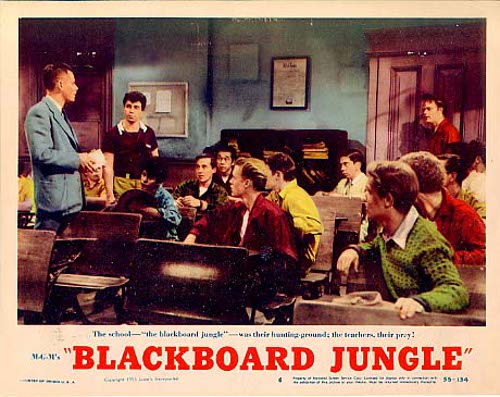By Walter Sorochan, HSD, MSc, BPE, MPH
Emeritus Professor: San Diego State University,
Posted October 10,2008, Updated August 1, 2014; May 8, 2019.
|
Update Educational Trends Posted: June 15, 2012; updated May 8, 2019 Immediate concerns in public school education today are many: lack of adequate funding, teacher lay-offs, lack of science and math teachers, improving graduation rates and so on. Education is also in the midst of a quiet technology-revolution that is about to make the current educational system dysfunctional and possibly obsolete. You and your school can take advantage of emerging opportunities to help students learn new skills in an out-dated educational system. This web-site shares the new trends in education that can improve student learning and achievement and update your educational system. Below is a 1955 movie about school education that in may ways typifies what is taking place in many schools in 2019. Very little has changed!
So what is replacing the out-dated educational system of yester year? The biggest impedment to better education is controversy over who should regulate public education. Should it be the federal government, the state government, the local schol district, teachers or the parents? Education in United States has become a hot potato and each entity thinks they have the answer. Meanwhile students in many schools continue to suffer. Another big issue is dispersment of state funds to school districts and schools. Related to this issue is where the money should be spent to improve education .... to pay for teacher salaries? school supplies? building maintence? sports, or students? Several states are re-assessing the power of teacher unions, teacher evaluation and security and curriculum revision. A silent debate is shaping about who should pay for educating youngsters --- the federal government, the state, local communities or parents! In the middle of all these controversies is lack of leadeship and a moral compass for education. Where does education stand in the big scheme of priority things? Dysfunctional politics has given revamping education a low priority. The public school curriculum itself is outdated and needs to be revised. We are providing education for the industrial revolution where jobs were labor manual intensive. Instead, we need to provide education for the information era and a changing future world, where the information age of computers and robots are replacing manual work, teachers and even factories. We need more technology schools to cater to youngsters who do not go to university. One bright spot in education is a trend for free on-line internet learning programs and ipads replacing computers and hard copy textbooks. For example, The Austin Public Library system began offering e-books for download in 2011 and has bought nearly 2,600 e-book titles. Other schools are replacing textbooks with free subject article databases. Schools are evolving localized school databases that will provide a school district's own flexible subject curriculum. Informative articles are a spin-off from e-book article libraries. Teacher presentations are being challenged by short length video presentations. For example, Santa Rita Elementary school, in Los Altos, California, in 2011, is part of a pilot program that is making the Khan Academy an integral part of the free u-tube math curriculum. Egan Junior High in Los Altos, California adopted the Khan series of videos. [ Khan Academy is an educational website that aims to let anyone “learn almost anything—for free. ] Another example is TED, in 2011, offering free video lessons for high school and college students. Khan and Ted short length videos on specific topics motivate students to learn, at their own speed, without teacher instruction. Another learning innovation comes from cell phones and smart pads allowing mobile and distance learning. Students can use their smart ipads and iphones to learn away from their schools and teachers. These innovations are about to change the role of teachers in the Hi-Tech learning process. There is new monitoring software [ Khan's dashboard ] that automatically follows the progress of each student and instantly prescribes ways to improve student achievement. The technology available today empowers students to be more proactive in the acquisition of knowledge. Students are also learning technological skills that should make them more competitive in the job market. These innovations add to the controversy over education; with many teachers disagreeing with Khan's video learning approaches. Khan's approach may be argued as shades of grey --- the good, the bad and the ugly. It is important to point out that many of these learning innovations are the tip of the iceberg! We don't really know how effective or valid such learning is in the long run! Today's [ 2012 - 2019 ] university graduates are having a very difficult time finding jobs that pay them a sustainable income and make them self-sufficient. The best gauge of an educational system is how productive graduates are 20 - 30 years after having graduated. But the immediate symptoms of an educational system that is not working is reflected in the high drop out rate of high school students and the inability of high school and university graduates to get self-sufficient jobs. But one thing for sure .... we have a long way to go to improve the educational system in United States. We are fortunate than many students do get a good high school education that qualifies them to be admmitted to universities. Innovations are being hampered by politics, ignorance and fighting over who has power in education. We have a culture in disarry and a confused educational system. By now, it should be obvious to you that you are not reading anything you have not heard before. It is important to point out that many of these learning innovations are the tip of the iceberg! We don't really know how effective or valid such learning is in the long run! The best gauge of an educational system is how productive graduates are 20 - 30 years after having graduated from high school. But the immediate symptoms of an educational system that is not working are reflected in many ways: 1. the high drop out rate of high school students, 2. the inability of high school and university graduates to get gett jobs that pay them a sustainable income. 3. the billion dollar student loan fiasco. 4. the many economic-political problems of a dysfunctional society linked to education. 5. Majority of public not voting nor trusting government and politicians. 6. The accelerating chronic health problems of teenagers and general public. |
Preamble: As the educational system goes, so goes the country. The wealth of a country is dependent on the health and education of its populace. Lacking good health produces lower Gross National Product or GNP. California is a good example of this! Our national economy today is in a shambles and we have a fair but mediocre school system. As a consequence, we are beginning to graduate our young people as second class citizens in the world! Related issues to our weak educational system are our dysfunctional politicians and corruption in Washington.
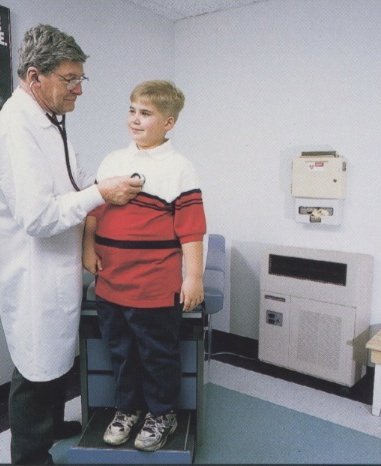 We need to re-prioritize our goals and better manage the monies allocated to education and
communities. We have many dysfunctional schools that do not function very well in the community
setting. Society is split into two invisible factions --- schools and parent communities. Schools seem to function in an isolated manner to communities.
There is little support between the two. For example, early childhood rearing receives
virtually no support from anyone. Young parents are left on their own in a version of trial
rearing of their children. There is very little wisdom or guidance given to raising pre-schoolers and children.
Recreation and community programs function exclusively on their own,
having very little communication from schools.
We need to re-prioritize our goals and better manage the monies allocated to education and
communities. We have many dysfunctional schools that do not function very well in the community
setting. Society is split into two invisible factions --- schools and parent communities. Schools seem to function in an isolated manner to communities.
There is little support between the two. For example, early childhood rearing receives
virtually no support from anyone. Young parents are left on their own in a version of trial
rearing of their children. There is very little wisdom or guidance given to raising pre-schoolers and children.
Recreation and community programs function exclusively on their own,
having very little communication from schools.
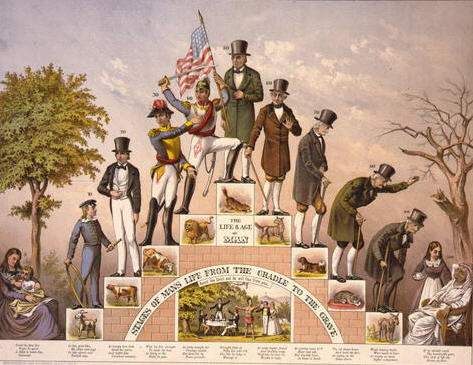
So what do we need? We need a coordinated system from the cradle to the grave [ image: stages of life on right ]. We can no longer assume that teens will somehow become parents, that babies and pre-schoolers will absorb good character from the winds blowing in the community, and that politicians will do the right things for their constituents. We need to evolve a system that prevents current problems. Lets lay out an ideal education system for society. It includes the need for continuous learning for all age levels, including parenting! Essentials of Education
The Ideal system:
|
1. Parenthood Pre-school Classes: We do have classes for pregnant parents and preparation for giving birth to a baby. But society has neglected to prepare young adults for parenthood; that is, raising a baby after birth. Although many young adults do an excellent job of rearing their children, others flounder as parents. Parenting is not a time for " on the job " training and putting children at risk! The curriculum for such classes should include needs of children, nutrition, health education, character-values development, fostering creativity and managing family finances. Perspective parents need to become aware of parental responsibilities for child discipline, character, creativity, child developmental needs and so on. |
|
2. Creativity: New born have no inhibitions. Children between the ages of 2 and 7 are naturally curious, with an inquisitive mind about everything they come into contact with. This natural curiosity allows children to use their imagination to solve problems. Their imagination will run wild as long as there are no expectations or outcomes. When children are hindered or stopped in using their creative minds, then children stop being creative. Their minds hibernate and they become less proficient in solving problems.
Art and music are common examples of creativity, but you can find creative thought in almost all
aspects of life -- from the way a parent quiets a crying child to the methods a scientist uses
to discover a cure for a disease.
|
|
3. Music: Research supports having children learn music as early as possible and continue into their teens. Children and teens who begin to play music early become better students. |
|
4. Character: inculcation must complement early childhood creativity and music. Ever wonder why so many university and professional athletes have problems with the law?
|
|
5. Academic: The remainder of this essay is on providing a comprehensive and relevant school curriculum that should include all the above aspects of development. |
We also need the political muscle, the moral fiber, the courage to do better and a belief that our children deserve better than they are getting now. We need to be ready to put aside our vested interests and accept a little sacrifice to fulfill educational dreams. School Systems need a comprehensive and bold vision of the future!

Purpose of this report: Improve education |
We need to focus on providing for the needs of our students from cradle to grades K –12. According to national research on health of children and teens, schools are not meeting the basic health, social, moral and academic needs of their children and teens. The real measure of success of a school system is what happens to its students and how successful they are 10 and 20 years after graduation! This author believes that our schools can do better than they are doing today! We need to focus on excellence and not on just being average or provide sports for the elite few! And that is the purpose of this report. This author has some suggestions on how we can improve our schools, help our teachers and meet the needs of our students! Many of our epidemic adult health problems are due to lack of good health education programs in the public school system. |
Suggestions on improving our educational system:
![]() 1. Education starts the day a baby is born. The brain of a baby on the first day of birth is
virtually empty. It has no information
and knows absolutely nothing. It is dependent on others for its survival and
future. Although a baby is born with instinct and natural
body functions like urination, defecation and sucking hunger instinct, it learns
everything else from it's significant others and its environment.
1. Education starts the day a baby is born. The brain of a baby on the first day of birth is
virtually empty. It has no information
and knows absolutely nothing. It is dependent on others for its survival and
future. Although a baby is born with instinct and natural
body functions like urination, defecation and sucking hunger instinct, it learns
everything else from it's significant others and its environment.
The point being made is that educators and the general public have been brain-washed into thinking that learning starts when the child starts school. Instead, a baby begins to learn from day one! Parents unwittingly and gradually stuff the baby's brain with tons of information and often biases. Babies learn and experience everything, the good, bad and ugly! Moms and dads are the first teachers and in most instances they are poorly prepared for child rearing. The consequences are .... that many of the teen and adult anti-social and health problems may be grafted during the first few months of life and unidentified and unrecognized, and contribute to many social and health problems in later life. This pre-school time of the child is the most neglected and over-looked part of the child's education. To offset the short-comings of parents, the entire community needs to participate in the education of the pre-toddlers. The first stage of life cannot be overlooked by government, society and educators.
![]() 2. Establish accountable children & teen-goals for all School Districts
2. Establish accountable children & teen-goals for all School Districts
Why is USA ranked 13th among other industrialized nations in education?
What plans does a School District have to make in order for its education to be comparable with the best in the world?? For example:
Youth Risk Behavior Surveillance [YRBSS] data were being used to measure progress toward achieving 15 national health objectives for 2010 and three of the 10 leading health indicators. In addition, education and health officials at national, state, and local levels are using these YRBSS data to improve policies and programs to reduce priority health-risk behaviors among youth. Is your school district doing the same?
Focus more on up-grading education and less on playing public relation games with parents!
![]() 3. Identify the basic needs and problems of children:
3. Identify the basic needs and problems of children:
Children and teens cannot learn properly if they are disabled, sick or diseased. They need to be healthy to be able to succeed as students. Our schools systems are taking a short-cut to NOT providing an in-school health care system substituted by athletic programs; it is an ignorant and negligent way of saving money!
The most efficient way to provide health care for children and teens is not through the current health care system but through an instituted TOTAL school health program that would be part of both the school system and the health care system. Obama health care deals with insurance companies and does not provide for illness care. Obama care does not reach all the children and this is the flaw in the current health care system. Health care for children and teens needs to be immediately accessible by providing school nurses in every school. As a total school health program, it would be housed inside every elementary, junior high and high school system; providing access to all students in a school on a daily basis. This suggestion for fixing the neglected teen health issue is critical because teens are " falling through the safety net" as evidenced by the drug epidemic and chronic disease crisis in this country.
Related to the total school health program is physical fitness --- considered as a disease prevention approach. We need more disease prevention for the majority through more and better physical fitness programs like mass participation in intra-murals and club sports. Today, intra-scholastic programs for the few have gobbled up teacher time and facilities away from the deprived majority. Public tax subsidized education money needs to be spent on the majority of the students and not just the elite few. This is the accountability that is lacking in most of our school districts.
By giving lower priority to athletics, schools would ensure a high priority for physical fitness for all, optimizing for well-being and taking preventive measures to combat the obesity and drug epidemics.
 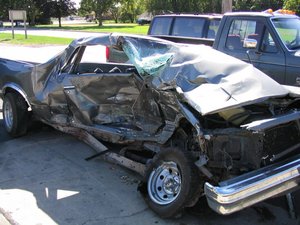


|
Problems of children & teens in 2003: [ From YRBSS ] 70.8% of all deaths among persons aged 10--24 years result from only first four causes: |
![]() 4. Improve the curriculum: Consider the best aspects of the “3-R’s “ rigorous education.
Focus on quality and relevant subject-matter. There are many good things in the current curriculum. We just need to buttress these with the
technological skills and give these more time to develop.
Schools need to add computer programming, computer-engineering, more chemistry,
math
and science to the current curriculum. Our schools need to prepare youngsters not just to live in our society but to function in a competitive world!
4. Improve the curriculum: Consider the best aspects of the “3-R’s “ rigorous education.
Focus on quality and relevant subject-matter. There are many good things in the current curriculum. We just need to buttress these with the
technological skills and give these more time to develop.
Schools need to add computer programming, computer-engineering, more chemistry,
math
and science to the current curriculum. Our schools need to prepare youngsters not just to live in our society but to function in a competitive world!
The most important need is comprehensive school education
![]() 5. Put morality into the schools:
5. Put morality into the schools:

 Fights between parents, players and referees during soccer and basketball games occur during recreation and school games. Is there a relationship between how a parent drives a car and how a parent behaves during a game? Do kids copy behaviors of their parents?
Fights between parents, players and referees during soccer and basketball games occur during recreation and school games. Is there a relationship between how a parent drives a car and how a parent behaves during a game? Do kids copy behaviors of their parents?
| "To educate a person in the mind but not the morals is to educate a menace to society!” By Teddy Roosevelt |
We have an endless parade of national corporate, church, sports and political scandals, disturbingly high rates of cheating, gun shootings, violence and substance abuse among the young. Enron and WorldCom executives involved in fraud and manipulation didn't need more IQ points. They needed a moral compass and the commitment to use it. Many educators have adapted "Enron accounting." We need to somehow implement some effective “ character education “ into our public school curriculum and reinforce it with responsible public behavior. There is no evidence that the current values education system is effectively working in any community [ witness the gun violence and school shootings ]. Honor systems are not working and school districts need to stop using it as a facade!
![]() 6. Give less priority to athletics.
6. Give less priority to athletics.
Many coaches today have more power than teachers and principals. School athletics have become the prep-springboards to university sports programs and professional sports. There is a lot wrong with today’s coaching and athletics!!!!
School athletics have become the prep-springboards to university sports programs and professional sports. There is a lot wrong with today’s coaching and athletics!!!!
Inter-scholastic sports have usurped and diluted the physical education programs. Physical education in schools has been forced to take a back seat to inter-scholastic sports. Coaches out-gun classroom physical education teachers and majority of students for gym and playground time.


Giving higher priority to interscholastic sports than physical education has taken away the opportunity from the many, who are overweight and physically unfit, and given it to the few who need it the least.
Our main priority in school sports should be in improving and maintaining the physical fitness of the majority of students and not the few super athletes. Physical and health education should be helping youngsters evolve optimal well-being. Such a program needs to cater to the many and not the few! Once again, we need to focus on providing essential services to the greatest number; hence educational accountability!
![]() 7. Implement compulsory physical education for all grades K through 12.
7. Implement compulsory physical education for all grades K through 12.
 Prioritize sports and physical activities:
Prioritize sports and physical activities:
Priority 1: Mandatory physical education for ALL grades
Priority 2: Intra-mural program for the masses.
Priority 3: Inter-scholastic sports. Available only if above two priorities fulfilled.
This priority is reverse to what it is in most schools.
![]() 8. Implement comprehensive health education.
8. Implement comprehensive health education.
Implement innovative health education Grades K-12. Chronic diseases and especially the obesity crisis may be attributed to lack of comprehesive health education in public schools. Schools need to provide nutrition courses and how the body works to both students and parents. Involve students in personal well-being and preventive illness. Demonstrate “how to be healthy” and how to prevent diabetes, obesity, cancer and so on. Create a culture for wellness and prevention. Involve parents in health classes. [ content example below:]
 |
Nutrition: Eating a balanced diet is the best medicine for a healthy life.
Children need nutrition education throughout elementary school so they can graft good eating habits
early in life. They should know how to select food, read labels, recognize junk foods and understand
nutritional balance as a way of controlling their body weight.
Food is linked to the bacteria in the large intestine or colon. Good foods feed good bacteria that enhance immunity and make us healthy, while bad foods [processed, sugar and sweets, processed foods, red meat] feed the bad bacteria that cause chronic diseases. |
 |
Alcoholic beverages, drunk driving and responsible drinking. |
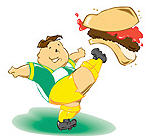 |
Problem: 1 of every 4 children are obese. We have an epidemic of obesity in USA. Teen Obesity Is a Ticking Time Bomb. Excess weight leads to serious adult health problems, such as diabetes, heart disease. Need Weight loss classes: Losing weight & self-esteem; Keeping new weight; Develop a consciousness for wellbeing by locating weight scales in cafeterias. Students need to re-learn how to eat healthy foods. |
 |
Degenerative diseases: Cardiovascular disorders, Cancer, Diabetes. Most dieases can be prevented. |
 |
Habit forming substances: Alcohol, Tobacco, opiates, Other. Schools need to make students aware of positive ways to satify emotional addictive cravings. |
 |
Disease prevention: How to stay healthy, Socially Transmitted Diseases, Sanitation, Food, Safe water. |
 |
|
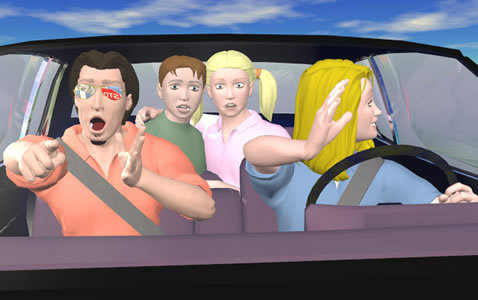 |
Driving safely options for driver education. |
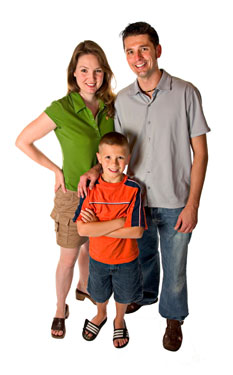 |
Family education for prospective parents. This class should be a pre-requisite before getting married & receiving a marriage license. Parenting is the only vocation where a parent stumbles and learns at the same time. Children deserve better than to have ignorant parents rearing them. |
![]() 9. Enforce the existing legislation on accountability.
9. Enforce the existing legislation on accountability.

We do have the legislation but no one to enforce it! We need to develop credibility in accountability now! We need to get everyone to start believing in the moral aspect of having educational accountability. Along with this, we need to evolve the will to enforce accountability!
![]() 10. Create economic - merit incentives for all at all levels.
10. Create economic - merit incentives for all at all levels.
 Educators and school administrators will change when they can have economic incentives by
which to improve themselves! Youngsters will also respond to change behavioral incentives.
Parents need to have economic incentives to be recognized as "super parents!"
Please check into Allan Enthoven, economics professor of Stanford University, and his
perceptions on how this may be applied to education.
Educators and school administrators will change when they can have economic incentives by
which to improve themselves! Youngsters will also respond to change behavioral incentives.
Parents need to have economic incentives to be recognized as "super parents!"
Please check into Allan Enthoven, economics professor of Stanford University, and his
perceptions on how this may be applied to education.
![]() 11. Monitor allocation of funding.
11. Monitor allocation of funding.
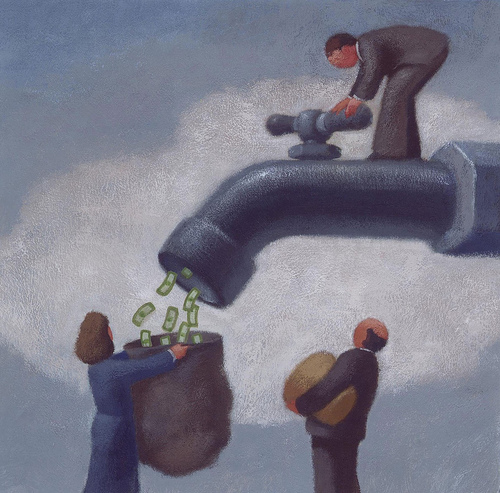 We must monitor how we allocate educational monies to school districts, principals and classrooms.
That is, how money is distributed or allocated, who receives it and how much.
Most important, funds are usually ear-marked specifically for specific programs. In many school districts, principals illegally mingle the special funds with
their general fund. Although this is illegal, most school boards look the other way.
" Follow the money trail!" Get your own CPA to read and interpret the school board budget. Reason: most folks do not know how to read a financial budget!
We must monitor how we allocate educational monies to school districts, principals and classrooms.
That is, how money is distributed or allocated, who receives it and how much.
Most important, funds are usually ear-marked specifically for specific programs. In many school districts, principals illegally mingle the special funds with
their general fund. Although this is illegal, most school boards look the other way.
" Follow the money trail!" Get your own CPA to read and interpret the school board budget. Reason: most folks do not know how to read a financial budget!
Monitoring of funds is not being done with any degree of accountability. Instead there is a lot of wasteful spending and diversion of funds. Review how monies are being allocated to schools at the state level; then follow the disbursement of funds all the way to the classroom. There is no accountability on how this money is being spent and whether we are getting anything for our investment as tax payers. In many instances, the money is shifted
away from the classroom for redundant issues. e.g. anti-smoking funds.
![]() 12. Get teacher accountability immediately.
12. Get teacher accountability immediately.
 We need a national and uniform educational curriculum code. Reason: in today's society,
parents often move from district to district and from one state to another, relocating where
jobs are. Children go with their parents. A student in any grade should be able to pick up class work in another state or district and not become academically retarded.
We need a national and uniform educational curriculum code. Reason: in today's society,
parents often move from district to district and from one state to another, relocating where
jobs are. Children go with their parents. A student in any grade should be able to pick up class work in another state or district and not become academically retarded.
Grading is another issue to consider: In any school district [similar in other districts ] two teachers teaching the same course work can teach a different content and grade differently. An A-grade in one class may be equivalent to a C-grade in another. The point here is that, today, there is no common denominator for evaluating students in the same course content / classes or among different schools. This smacks with lack of accountability at the lowest level.
![]() 13. Standardize the grading and evaluation system for students, teachers and schools.
13. Standardize the grading and evaluation system for students, teachers and schools.
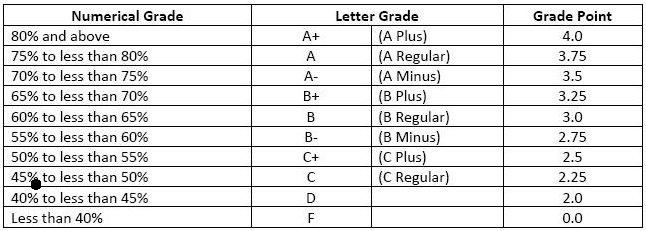 Good teachers teach content and create an evaluation system to monitor student achievement and progress. Teachers need to monitor the weekly progress of each student and then give this progress as feedback motivation to the students. Students need feedback to know that
teachers do care, that they are learning and that they are also becoming better informed, developing into good citizens and can make better judgments. This is a very simple thing to do, but it takes a lot of time and effort.
We do have the computer technology to track classroom learning. But it is not being done properly for whatever reasons. Hence, lack of accountability in educational quality.
Good teachers teach content and create an evaluation system to monitor student achievement and progress. Teachers need to monitor the weekly progress of each student and then give this progress as feedback motivation to the students. Students need feedback to know that
teachers do care, that they are learning and that they are also becoming better informed, developing into good citizens and can make better judgments. This is a very simple thing to do, but it takes a lot of time and effort.
We do have the computer technology to track classroom learning. But it is not being done properly for whatever reasons. Hence, lack of accountability in educational quality.
![]() 14. Increase teacher salaries.
14. Increase teacher salaries.
 It is ironic that although the two most important jobs in any society are parenting and teaching, these are given the lowest recognition and pay in United States.
It is ironic that although the two most important jobs in any society are parenting and teaching, these are given the lowest recognition and pay in United States.
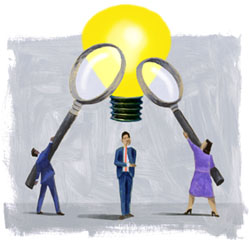 We entrust teachers to teach children but not reward them for their best efforts! We expect them to teach, but instead, many of them end up baby-sitting because many of their students lack the self-discipline to learn! We expect teachers to inculcate values in
children but instead, we dilute this process with our poor examples in government, politics and professional sports! We blame teachers when children do not learn enough! And we wonder why school boards cannot attract the brightest stars to provide more sunshine in the schools! Teacher salaries should be commensurate with their abilities and success in motivating all students to perform at their highest levels.
Poor teachers should be fired and replaced by good teachers.
We entrust teachers to teach children but not reward them for their best efforts! We expect them to teach, but instead, many of them end up baby-sitting because many of their students lack the self-discipline to learn! We expect teachers to inculcate values in
children but instead, we dilute this process with our poor examples in government, politics and professional sports! We blame teachers when children do not learn enough! And we wonder why school boards cannot attract the brightest stars to provide more sunshine in the schools! Teacher salaries should be commensurate with their abilities and success in motivating all students to perform at their highest levels.
Poor teachers should be fired and replaced by good teachers.
![]() 15. Bring discipline back into the classroom:
15. Bring discipline back into the classroom:
 Classroom discipline is perhaps the most important need in schools today.
Children bring to school behaviors and values that parents raised them with. Thus parents need
to be sensitized that the discipline that they impose in their home is the structure that
their child acts out in the school. Good discipline builds confidence and security in the child
and this must start at the pre-school stage.
An unruly child disrupts the entire group of
well-disciplined children.
Example of getting discipline
Classroom discipline is perhaps the most important need in schools today.
Children bring to school behaviors and values that parents raised them with. Thus parents need
to be sensitized that the discipline that they impose in their home is the structure that
their child acts out in the school. Good discipline builds confidence and security in the child
and this must start at the pre-school stage.
An unruly child disrupts the entire group of
well-disciplined children.
Example of getting discipline
Teachers cannot teach without total class discipline; otherwise they become baby sitters and their students learn " nothing;" Indeed teens especially learn to become failures! Teachers need to get class discipline first and then teach; in that order. It is discipline that becomes the rudder in a younster's life and that propels her/him toward a success track!
Children probably won't have self-discipline when their parents, in turn, lack it. Thus to get classroom discipline, teachers need to get parents to implement discipline in homes.
The best way of doing this has already been mentioned earlier in this essay [ Parental pre-school classes ]. Another is to create incentives for parents to enforce discipline with their children. Parents need to be made aware of that children and teens bring to school the discipline they were raised with.
School boards and their teachers need to create incentives for rewarding pupil self-control and discipline. School boards need to hold parents more accountable for a child’s behavior. Instead of punishing a child for misbehavior and lack of discipline, school boards should punish faulty and negligent parents. [ There are may ways of doing this ].
![]() 16. Give CLOUT back to the teachers and school boards:
16. Give CLOUT back to the teachers and school boards:
The power of education has been usurped away from the classroom since 1960s; it has been gradually eroding. Today, no one seems to be able to do anything, much less teach, without parental interference. It seems that everyone, upon graduating from high school, has become an expert on education.
Well, it is doubtful if anyone is really an expert on education. Granted, most parents do a superb job of disciplining their children and raising them.
But it is the few who are weak parents that often are responsible for disrupting the educational process.
We need to give back the power of teaching to the teachers. Classroom control means discipline in the classroom! Without this first step, all other reforms are meaningless.
Education is in a state of crisis! We need leaders to step up and take charge!
ALERT: Your feedback on this article is most appreciated. Thank you: E-mail author wsorochan@gmail.com
Credits: Walter Sorochan:
1. Expertise as a former public schools teacher
2. Emeritus Professor of Public Health and Health Education at San Diego State University.
3. As a professor, did research and wrote textbooks on how youngsters learn, how values develop, structuring curriculae, teaching methodology and other pedagogy.
4. Involved in helping to develop educational accountability legislation in the mid-‘70’s in California.
Batey Anton, "The Trouble with No Child Left Behind," Ludwig Von Mises Institute, March 23, 2010. Batey: trouble schools left behind
